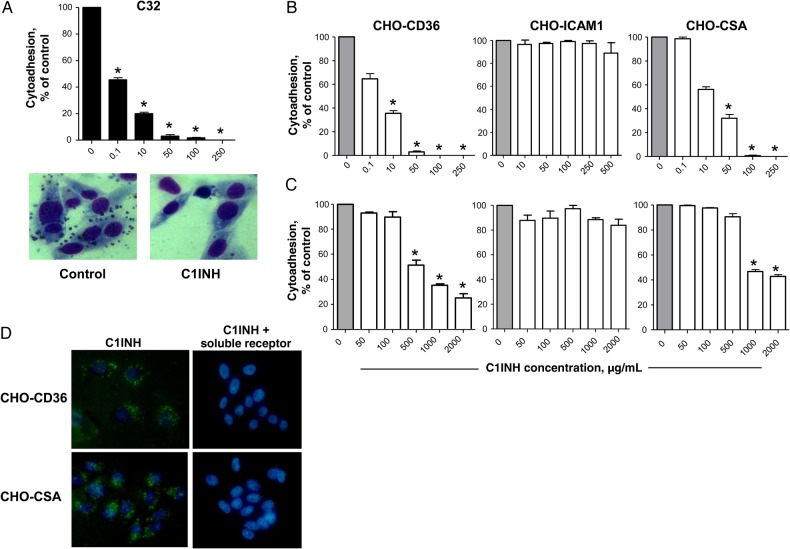Figure 5.
Human C1-inhibitor (C1INH) blocks Plasmodium falciparum–infected red blood cell (RBC) cytoadhesion to host receptors via binding to CD36 and chondroitin sulfate A (CSA). A, Percentage of C32 cells adherent to infected RBCs in the presence of different concentrations of C1INH added at the same time as parasites, compared with controls without C1INH. Data represent mean values and standard errors of the mean of 3 experiments performed. *P < .001, vs control (no C1INH). An image demonstrating infected RBC adherence to C32 cells (left panel) and blocking of adhesion by C1INH (right panel) is also shown. B and C, Percentage of cytoadhesion, relative to that of controls, among RBCs infected with parasites selected to specifically adhere to CD36, ICAM-1, or CSA expressed on Chinese hamster ovary (CHO) cells when human C1INH is added before (B) or concurrently with (C) infected cells. D, Microscopy findings showing the binding of fluorochrome-conjugated human C1INH at the surface of CHO cells (left panels) expressing CD36 (upper panels) or CSA (lower panels). Prior incubation of the fluorescent C1INH with soluble CD36 or CSA abrogates the binding to CHO cells (right panels).

